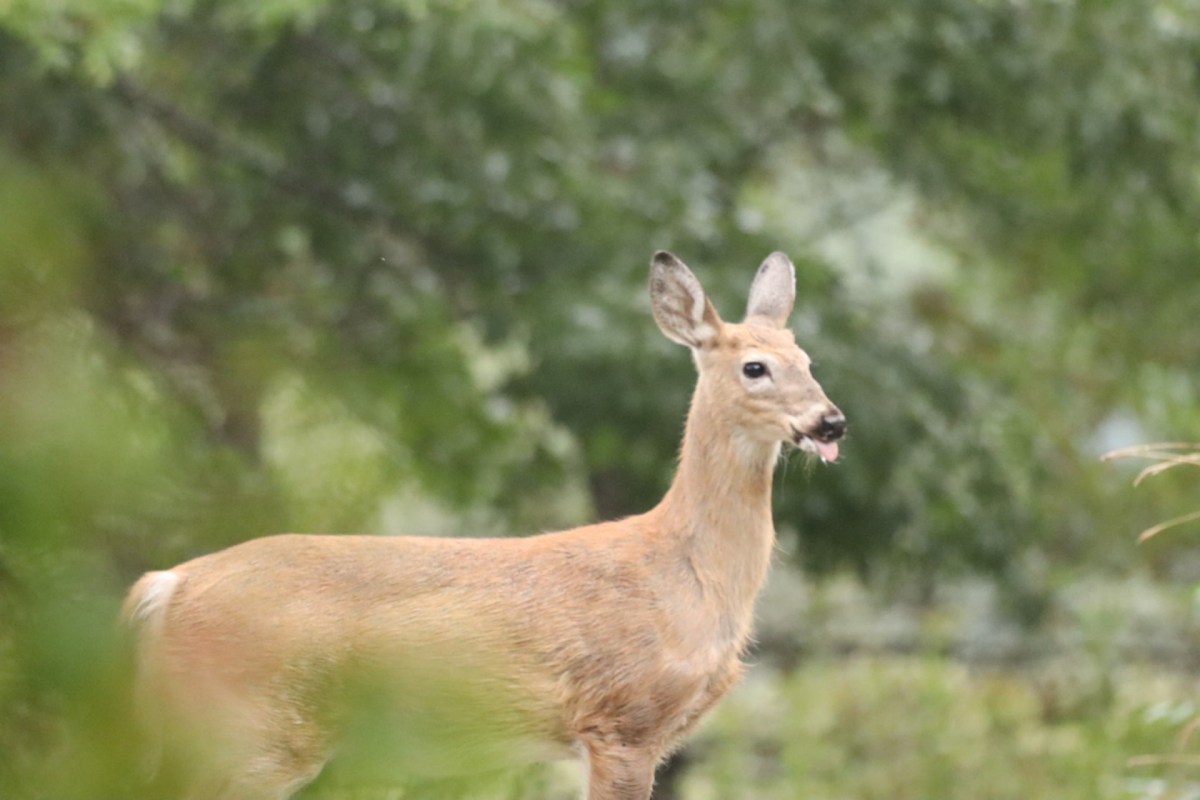When wildlife gets sick, it might seem like a faraway problem to people living in developed cities and suburbs. However, some diseases pose a potential risk to humans, as well as damaging wildlife populations. The spreading epidemic of chronic wasting disease (CWD) in deer, elk, and moose — which has just been confirmed to have reached Yellowstone National Park — is one such troubling condition, the Guardian reports.
What's happening?
CWD is a "prion disease," meaning it's caused by particles smaller than bacteria or viruses called prions. As Johns Hopkins Medicine explains, prions are proteins that are folded incorrectly compared to the ones naturally found in the body. They cause other proteins in the brain to fold incorrectly, multiplying and causing brain damage.
Prion diseases affect specific species, the Guardian reveals. CWD is known to affect deer, elk, moose, and caribou. This leads to symptoms like drooling, lethargy, malnutrition, clumsiness, and a "blank stare" that has caused some to compare infected animals to zombies. The disease is incurable and deadly.
CWD has been spreading gradually across the United States and is now present in 32 states. Epidemiologist Dr. Michael Osterholm called it a "slow-moving disaster."
Because prions are a very different cause of disease from other causes like viruses, bacteria, and parasites, they can't be treated in the same way. According to the Guardian, CWD particles are immune to disinfectants, formaldehyde, radiation, and incineration at temperatures of up to 1,100 degrees Fahrenheit. Not only that, but they can survive for years outside the host body before infecting another animal.
Why does CWD matter if it only affects deer?
While normally prion diseases are limited to specific species, there is a risk that they can "jump the species barrier," the Guardian reveals. That's what happened with mad cow disease (bovine spongiform encephalopathy or BSE) in the United Kingdom. It was a prion disease that initially only affected cattle, but then it made the jump to humans, causing variant Creutzfeldt-Jakob disease.
"The BSE outbreak in Britain provided an example of how, overnight, things can get crazy when a spillover event happens from, say, livestock to people," Dr. Cory Anderson, who studied with Osterholm, told the Guardian. "We're talking about the potential of something similar occurring."
What can we do about CWD?
According to the Guardian, the best option is more natural wildlife management. Wyoming operates "feedgrounds" to give food to elk in winter; these are potential hotbeds of disease and should be ended.
Meanwhile, natural predators like wolves and cougars are good at spotting diseased prey animals and are thus far immune to CWD. They should be allowed to hunt freely rather than being killed, as they often are in Wyoming, Montana, and Idaho.
Join our free newsletter for weekly updates on the coolest innovations improving our lives and saving our planet.









